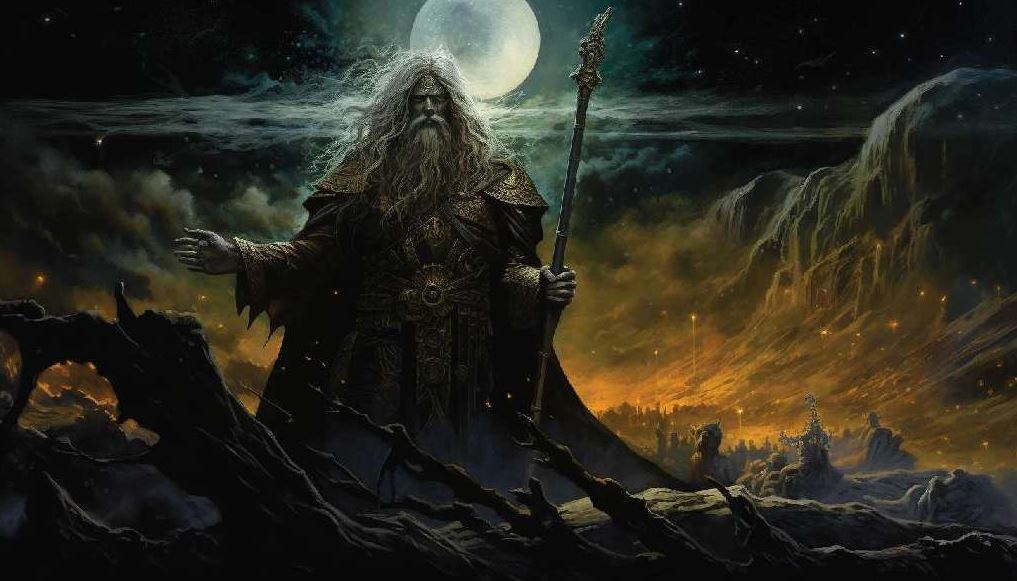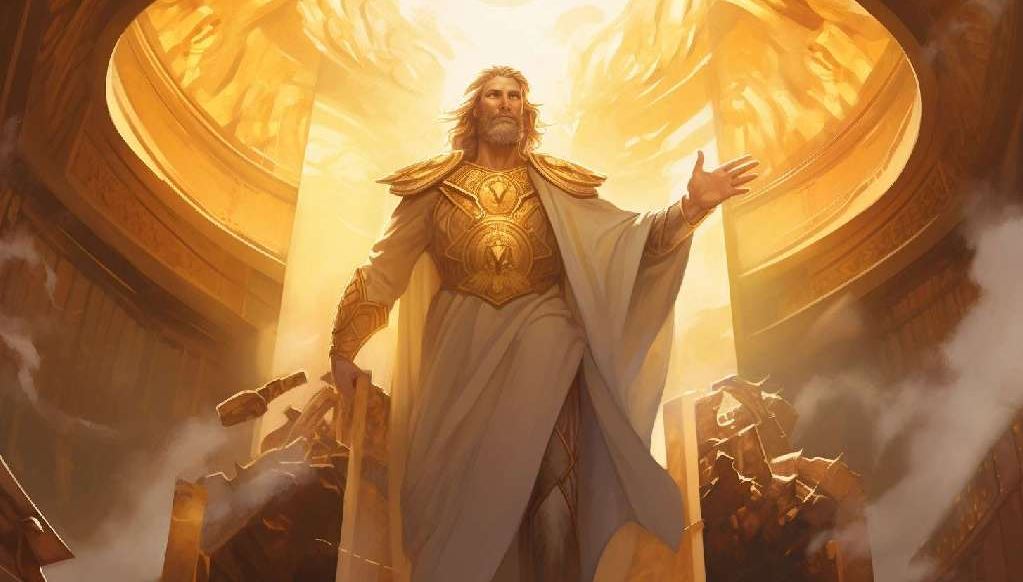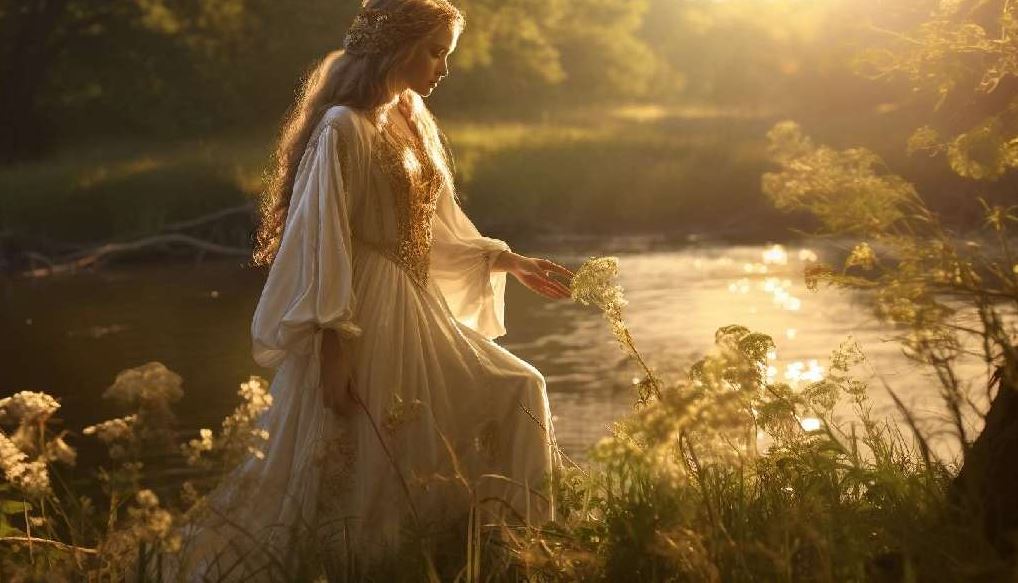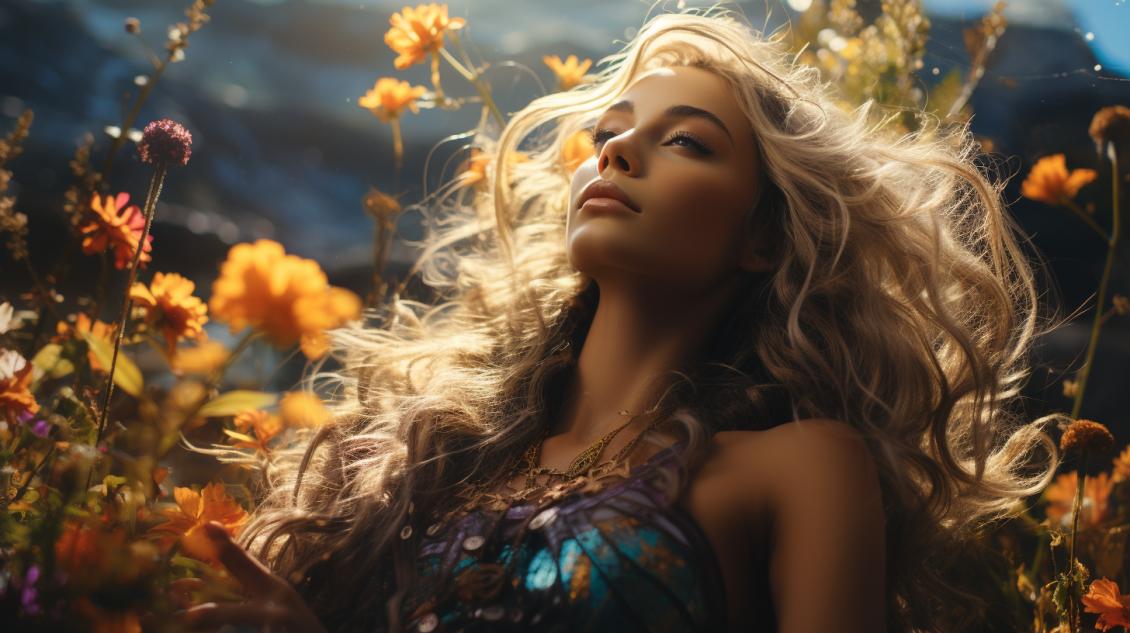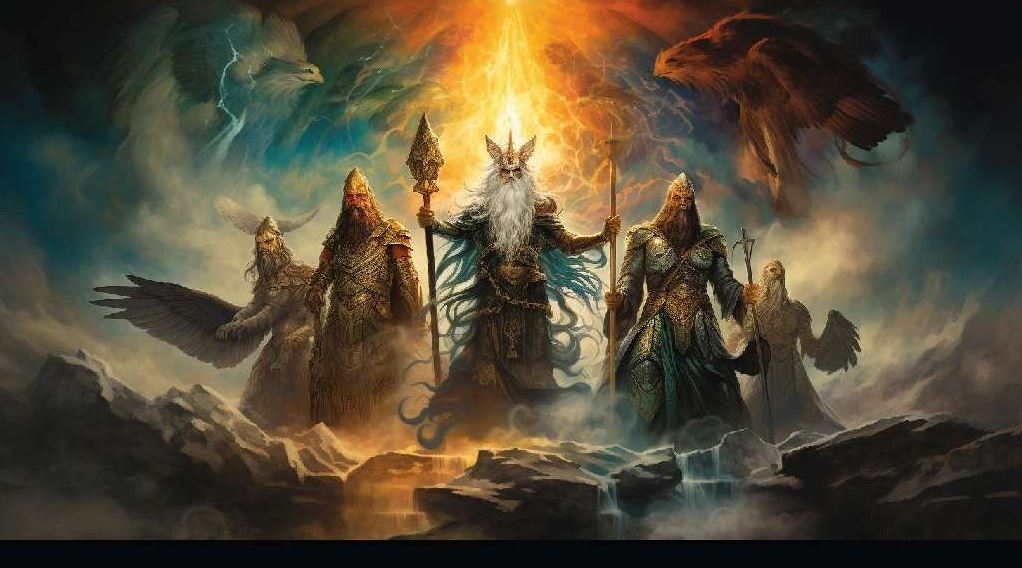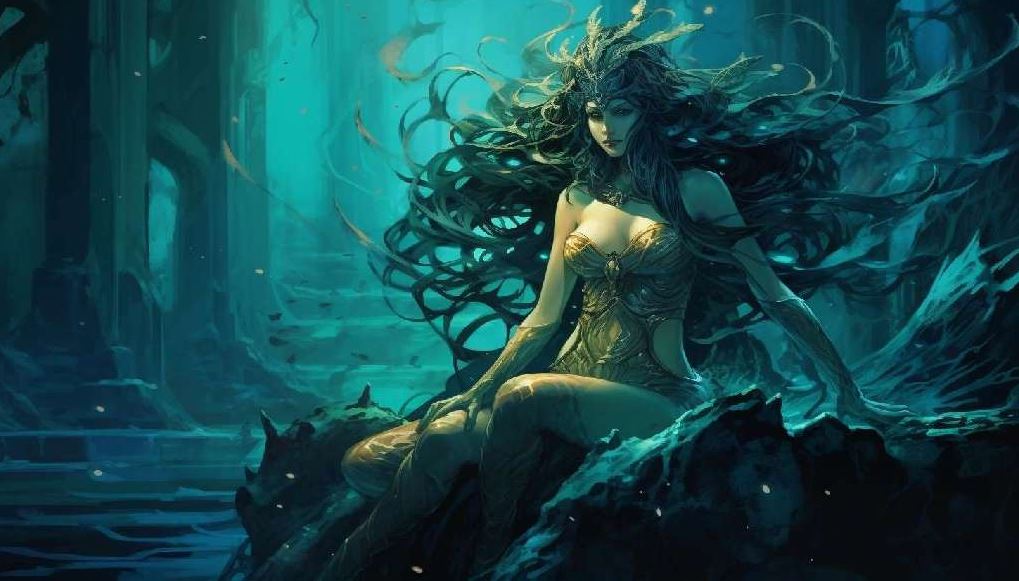Eir Norse Goddess: Unveiling the Mystery of this Norse Healing Deity
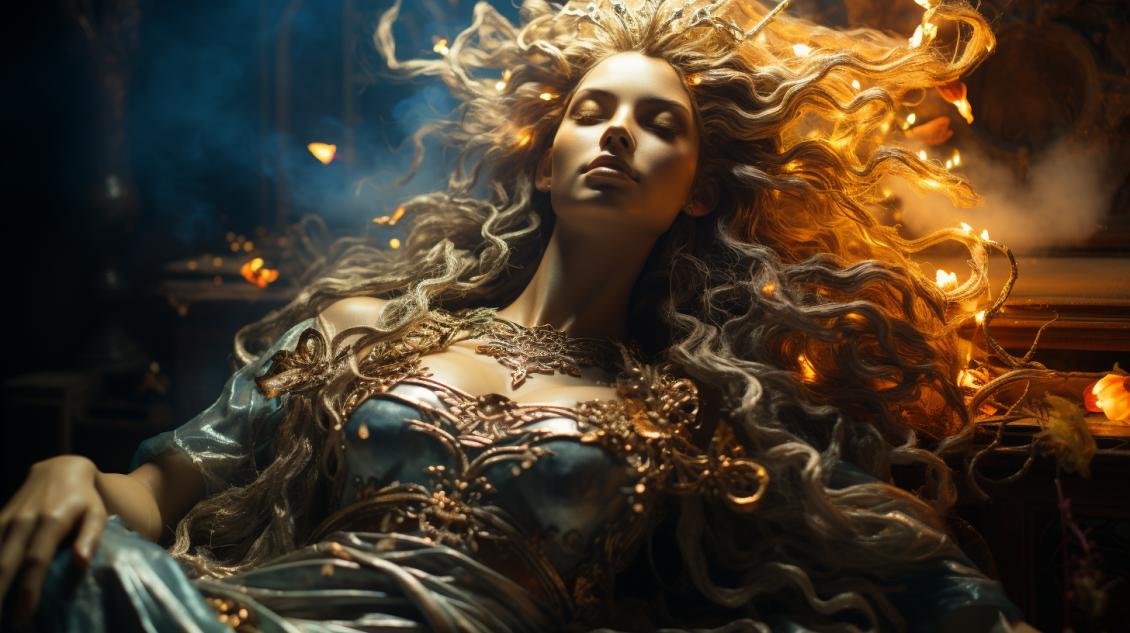
Eir Norse Goddess, a mysterious figure in Norse mythology, captivates with her healing abilities. Debates arise regarding her nature as both a goddess and a valkyrie, potentially linked to Frigg or compared to the Greek deity Hygieia.
In the realm of Norse deities, Eir holds a prominent position as a skillful healer, mentioned as an Aesir in some accounts. She is also associated with Menglöð, seated upon the healing hill, and together they inspire calls for healing.
Eir’s importance extends to women’s healing, childbirth, and even mythical locations like Lyfjaberg. Skaldic poetry highlights Eir’s role alongside Frigg‘s companion, Vár, empowering women in ancient Norse society.
Eir Norse Goddess: Unveiling the Mystery
Delve into the enigmatic realm of Eir, the Norse goddess shrouded in mystery. Unravel the intricacies of her nature as debates surround her classification as either a goddess or a valkyrie.
Explore the captivating parallels drawn between Eir and prominent figures such as Frigg and Hygieia, the Greek deity.
The Nature of Eir: Goddess or Valkyrie?
Controversy surrounds the essence of Eir, with scholars attempting to decipher her true identity. Is she truly a goddess, or is she one of the renowned valkyries? Unveiling the nature of Eir unveils the depth of her divine significance in Norse mythology.
Comparisons with Frigg and Hygieia
Eir’s enigmatic nature invites intriguing comparisons to other prominent divine figures. Explore the parallels drawn between Eir and Frigg, the influential goddess in Norse mythology. Additionally, uncover the potential connections between Eir and Hygieia, the Greek goddess of health and well-being.
By examining these comparisons, a greater understanding of Eir’s role and significance within the pantheon emerges, shedding light on her captivating qualities as a Norse goddess.
Eir in Norse Mythology
Eir is a significant figure in Norse mythology, revered both for her association with the Aesir deities and her remarkable healing abilities. Let us delve into the multifaceted nature of Eir’s divine presence and explore the debates surrounding her identity as both a central Aesir deity and a valkyrie.
Eir: A Central Aesir Deity and Skilled Healer
Within the Norse pantheon, Eir holds a central position as an Aesir deity. Revered for her exceptional healing prowess, she is known as a “very good physician” in the Edda prosaica.
Eir’s intimate knowledge of medicinal arts makes her a revered figure in Norse mythology, with her skills embodying the essence of healing and well-being.
Eir’s role as a skilled healer extends beyond physical ailments. In ancient Norse society, women played a vital role in the realm of healing, and Eir was considered a prominent healer.
She held the power to choose who would recover from battles and oversaw the process of childbirth, emphasizing her connection with women’s well-being and the continuation of life.
Eir as a Valkyrie: Exclusion and Debates
Despite Eir’s recognition as an Aesir deity, there are conflicting accounts that depict her as a valkyrie. In some instances, she is excluded from lists of Aesir and explicitly mentioned as a valkyrie.
This ambiguity surrounding Eir’s nature gives rise to debates and theories regarding her true identity within the Norse pantheon.
Speculations suggest Eir’s association with valkyries could stem from her exceptional ability to heal the wounded, even extending her healing powers to the realm of the deceased. It is plausible to consider Eir as a valkyrie with the extraordinary capability to bring healing and restoration to fallen warriors.
Eir’s enigmatic existence as both an Aesir deity and a valkyrie opens intriguing possibilities for further exploration, highlighting the complex tapestry of Norse mythology and the intricate roles played by divine beings like Eir.
Eir’s Roles and Associations
Eir and Menglöð: Guardians of Healing
Eir holds a significant role as a guardian of healing alongside Menglöð, embodying compassion and skill in the field of medicine. Together, they form a powerful duo, aiding those in need of physical and spiritual recovery.
Menglöð’s protective influence and Eir’s expertise create a harmonious alliance that brings solace to the wounded and restores hope in the face of adversity.
Lyfjaberg: The Sacred Hill of Eir
Deep within the realms of Norse mythology lies Lyfjaberg, the sacred hill where Eir gathers with spirits of healing. This mystical location serves as a focal point for divine intervention, where Eir harnesses her abilities to bring forth remedies and alleviate suffering.
It is a place where prayers and offerings are made to invoke her assistance, seeking her blessings in the pursuit of physical and emotional well-being.
Eir’s Connection to Women’s Healing and Childbirth
Eir’s influence extends beyond general healing to specifically encompass women’s health and childbirth. In ancient Norse society, she was revered as a guiding presence during childbirth, ensuring the safety of both mother and child.
Her wisdom and nurturing nature guided midwives and provided comfort to expectant mothers, emphasizing the crucial role women played in the healing arts. Eir’s connection to women’s healing reinforces her status as an empowering figure, offering support and strength in the face of life’s most transformative moments.
Eir in Skaldic Poetry and Runic Inscriptions
Eir and Vár: Companions of Frigg
In the realm of Norse mythology, Eir is closely associated with another prominent figure, Vár, often depicted as companions of Frigg, the powerful goddess of marriage and motherhood. Skaldic poetry and runic inscriptions shed light on their connection, emphasizing their shared roles and influence.
Eir and Vár, mentioned together in various poetic verses, symbolize the interconnectedness of healing and truth. Vár, representing oaths and vows, complements Eir’s role as a healer, emphasizing the importance of keeping one’s word and maintaining harmony within relationships.
Together, they embody Frigg‘s wisdom and guidance, reflecting the supportive and empowering nature of Norse goddesses.
Eir’s Empowering Influence in Ancient Norse Society
Eir’s presence in skaldic poetry and runic inscriptions showcases her inspiring and empowering influence within ancient Norse society. As a healer and guardian of health, she played a crucial role in fostering well-being and ensuring the survival of individuals, families, and communities.
Moreover, Eir’s prominence as a female figure of empowerment challenges the traditional gender roles prevalent in Norse society. Her association with healing, childbirth, and life-affirming aspects showcases the valued contributions of women in healthcare and their essential role in preserving life.
Eir’s mythical representation in skaldic poetry and runic inscriptions served as a reminder of the strength and capabilities of women in ancient Norse culture. Her empowerment extended beyond physical healing, encompassing wisdom, compassion, and the nurturing essence associated with the divine feminine.
- Skaldic poetry celebrates Eir’s exceptional healing abilities, emphasizing her role as a force of restoration and renewal.
- Runic inscriptions dedicated to Eir highlight her significance as a guardian of life and source of hope in times of battle and strife.
- Eir’s empowering influence reached beyond the physical realm, inspiring women to embrace their inherent strength and nurturing qualities.
.
…











